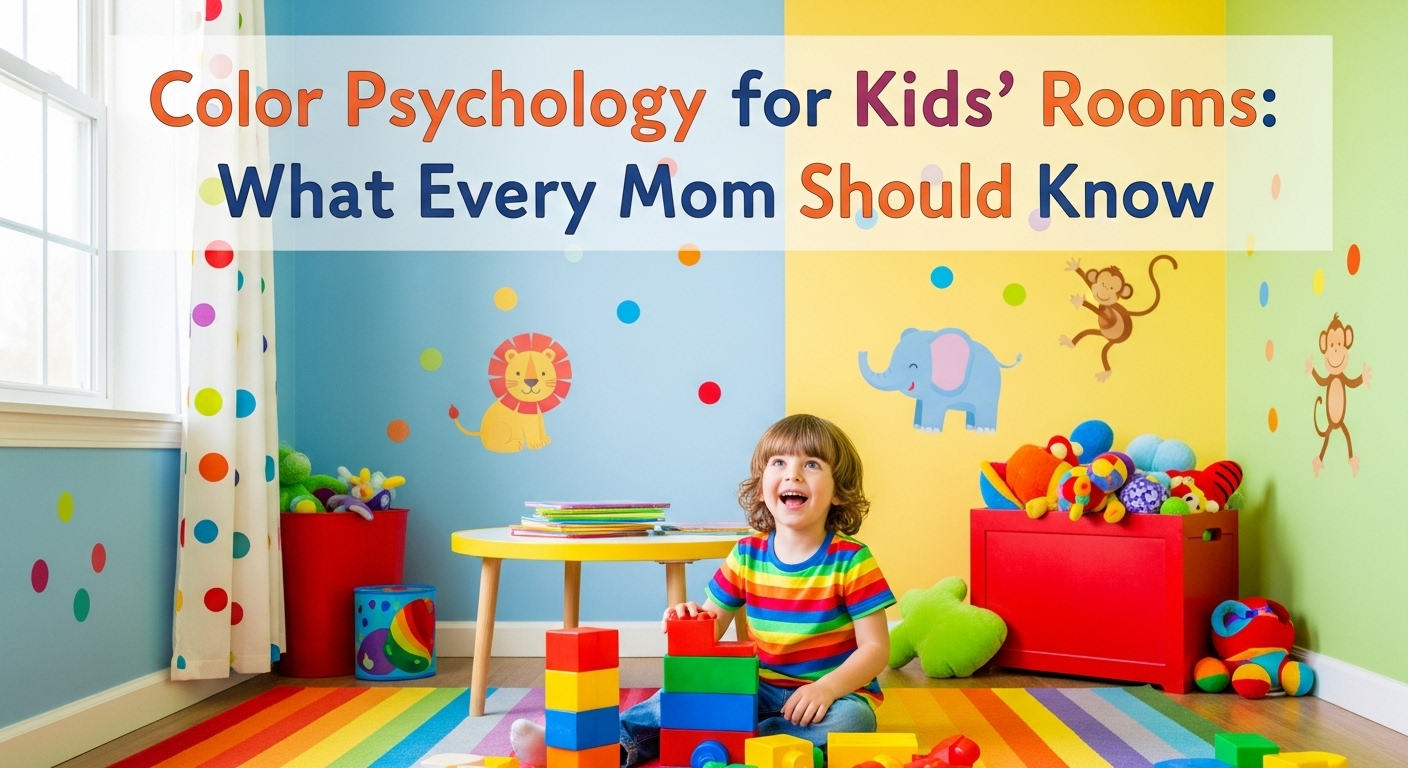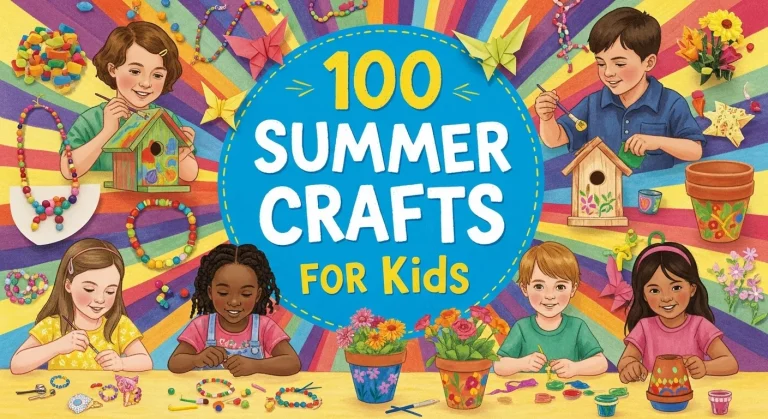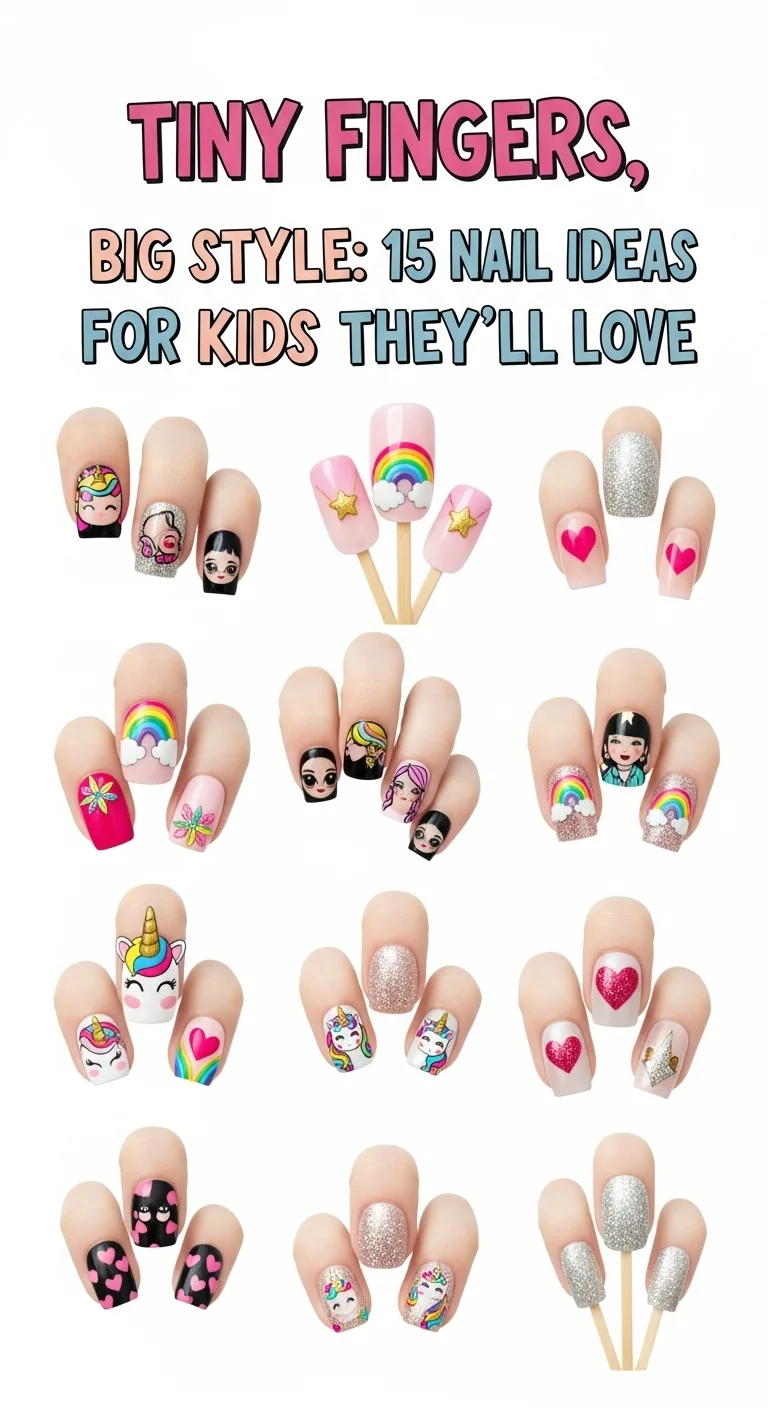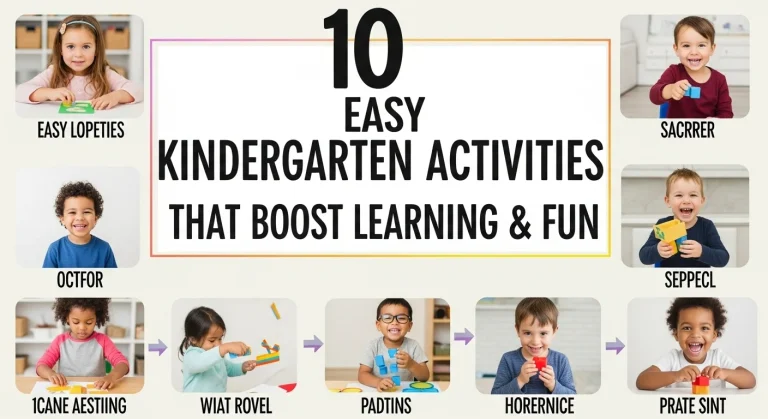Color Psychology for Kids’ Rooms: What Every Mom Should Know
Creating a kids’ room is more than choosing cute wallpaper—it’s an opportunity to shape the mood, playfulness, learning, and even sleep habits of your child. Color psychology shows us that what we paint matters. In this full guide, you’ll discover how to use color intentionally in kids’ spaces for growth, calm, creativity—and even bonding. You wil come to know that after reading this article how color psychology for kids rooms matter.
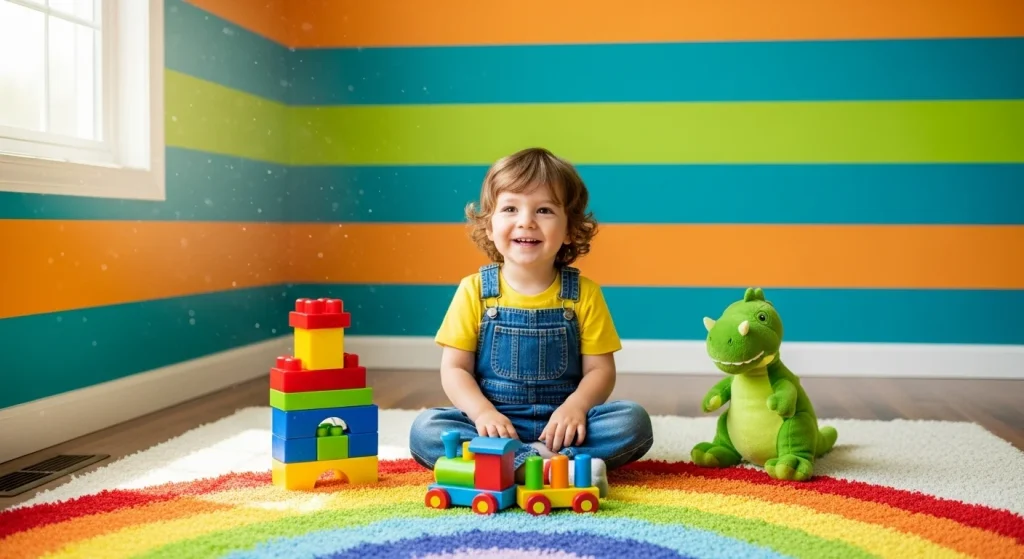
1. Why Color Psychology Matters in Kids’ Spaces
Paint isn’t just decoration: it shapes behavior, mood, focus, creativity, and rest. Color-triggered reactions begin in infancy and continue throughout childhood.
- Warm tones (reds, oranges) boost energy and appetite—great for play areas
- Cool tones (blues, greens) encourage calm and concentration—ideal for sleeping and study zones
- Neutrals and pastels provide balance, creating a clean and uplifting baseline
Making deliberate color decisions (rather than following trends or random picks) helps shape a space that both functions and nurtures.
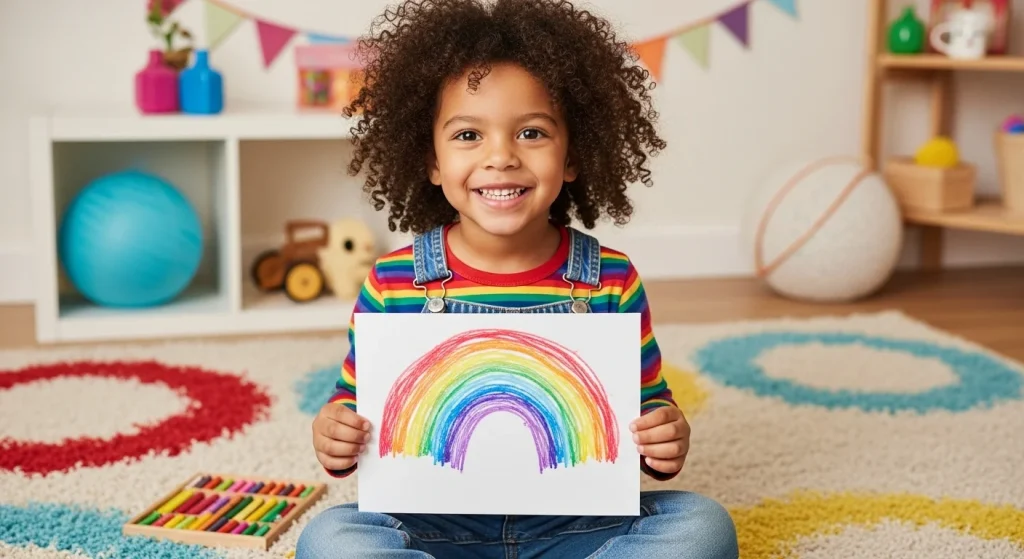
2. How Colors Influence Emotions & Behavior
Red & Coral
Energy + Boldness
Red is exciting—best used sparingly in activity areas or accent walls. Coral tones bring fun without overstimulation.
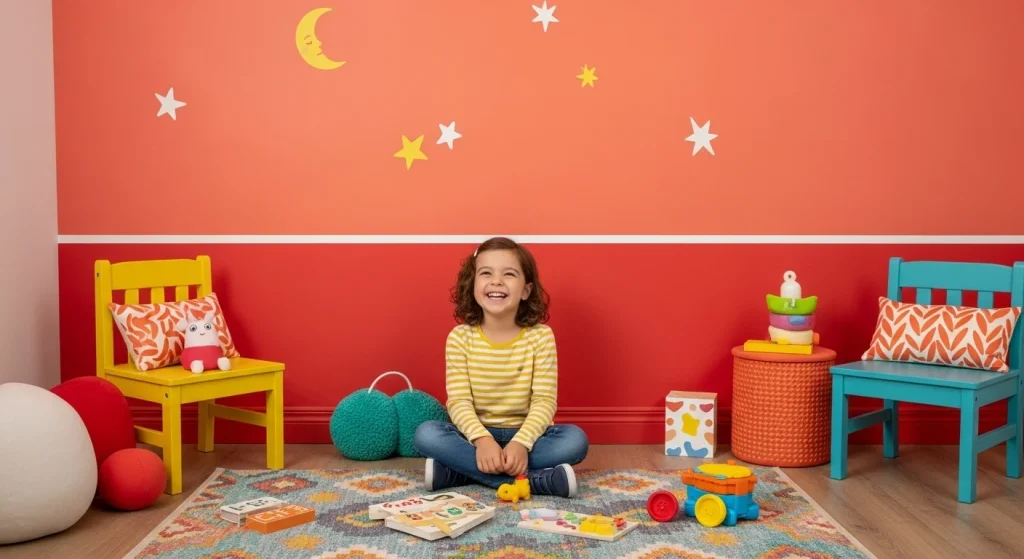
Orange & Peach
Friendliness + Creativity
Orange sparks imagination and conversation. In collaborative play zones, a soft peach accent energizes without chaos.
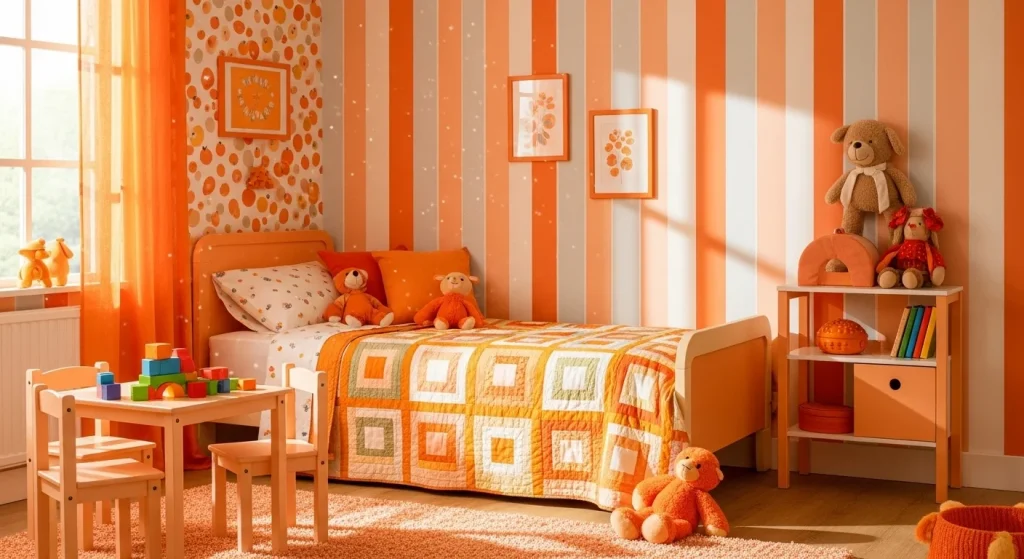
Yellow & Gold
Happiness + Focus
Soft yellow uplifts mood; gold accents feel whimsical. Too-bright yellows can be overstimulating—stick to muted shades.
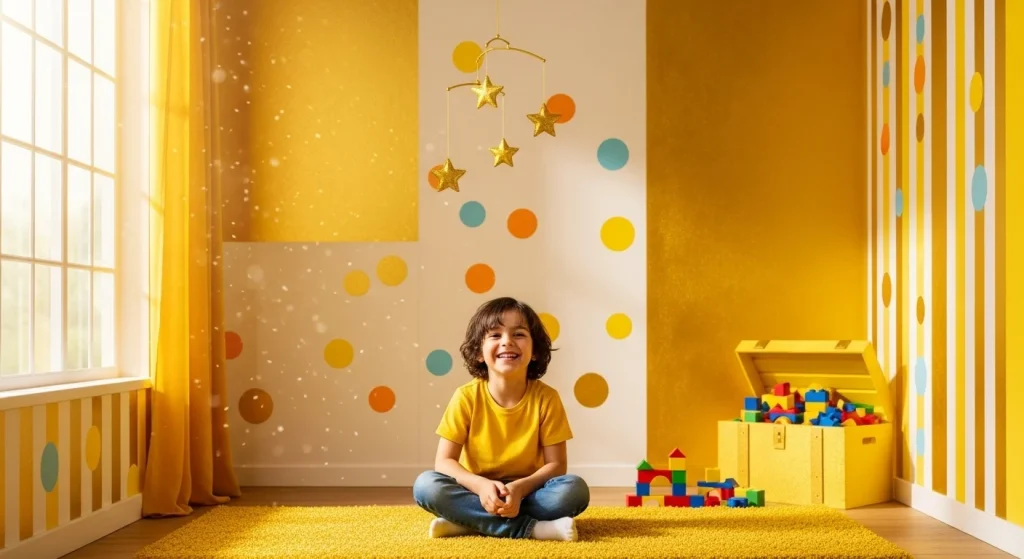
Green & Sage
Balance + Calm
Green connects kids to nature, aiding relaxation and focus. Great choice for reading nooks or restful bedrooms.
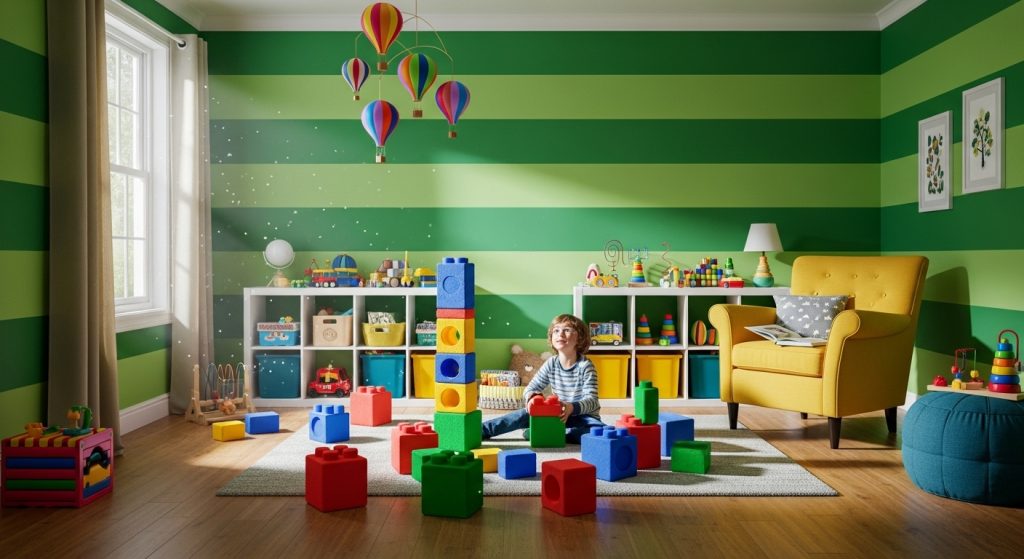
Blue & Teal
Plus, I’ve added a helpful anchor link to stylish, wallet‑friendly inspiration: check out these budget-friendly kids room makeover ideas that look designer-worthy!
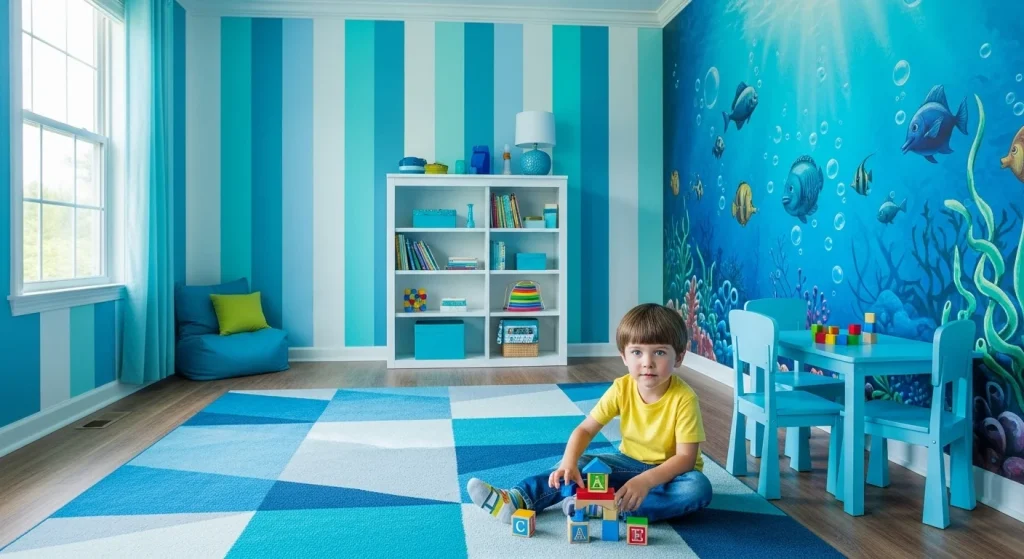
Calm + Productivity
Blue promotes rest, logic, and focus. Teal offers calm with a playful pop. Chess lovers or homework zones love this hue.
Purple & Lavender
Creativity + Serenity
Deep purple encourages imagination while lavender calms. Perfect combo for art corners and bedtime harmony.
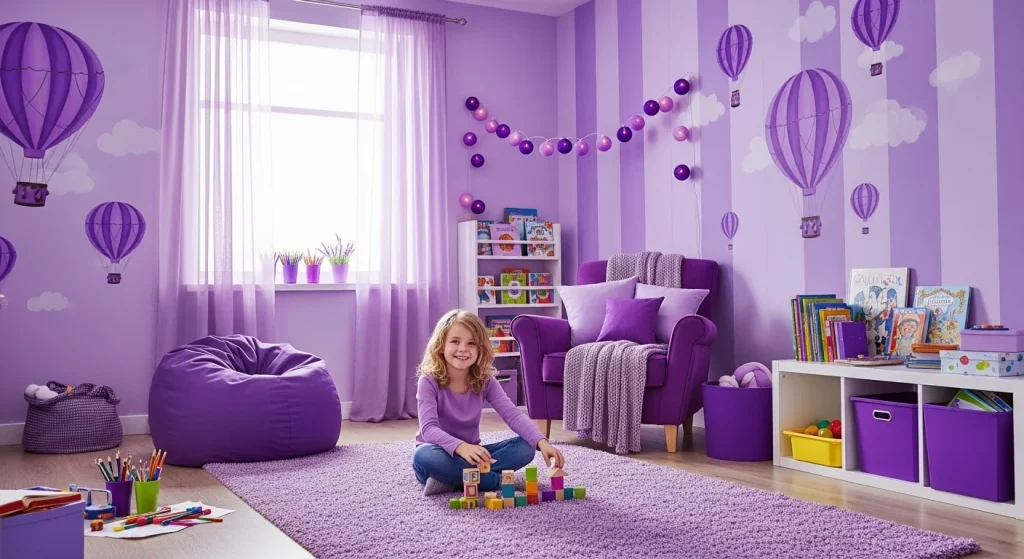
White, Grey & Beige
Foundation + Flexibility
Neutral palettes provide a clean canvas. All colors pop, patterns rest easy, and furniture matches effortlessly.
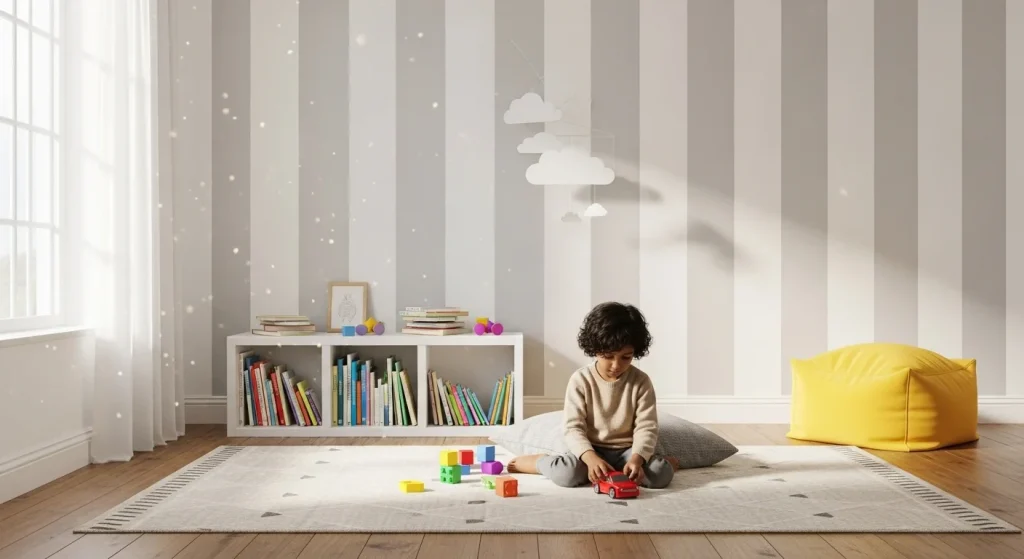
3. Picking a Color Palette (That Grows with Your Child)
- Start with one foundational neutral wall: pale grey or warm white gives you flexibility.
- Add two accent tones: one playful (e.g. coral) + one calming (e.g. sage).
- Use pops of color via artwork, pillows, or rugs—easy to update.
- Let your child pick accessories—this gives them ownership.
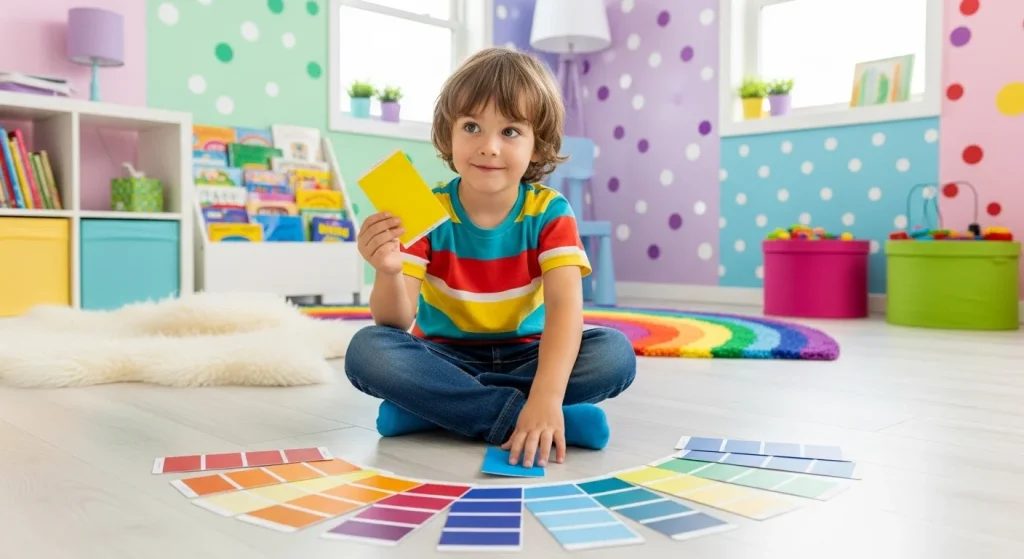
4. Color Trends & How to Use Them Safely
These trending palettes are toddler-tested and can be applied intentionally:
- Terracotta & Sage: Earthy, grounded, ideal for sibling and shared rooms
- Peach & Navy: Cheerful and gender-neutral—spotlight one accent wall
- Aquamarine & Warm White: Fresh, coastal-feel space perfect for dream builds
- Mustard & Soft Grey: Bold and trendy in playful ways (like polka dot murals)
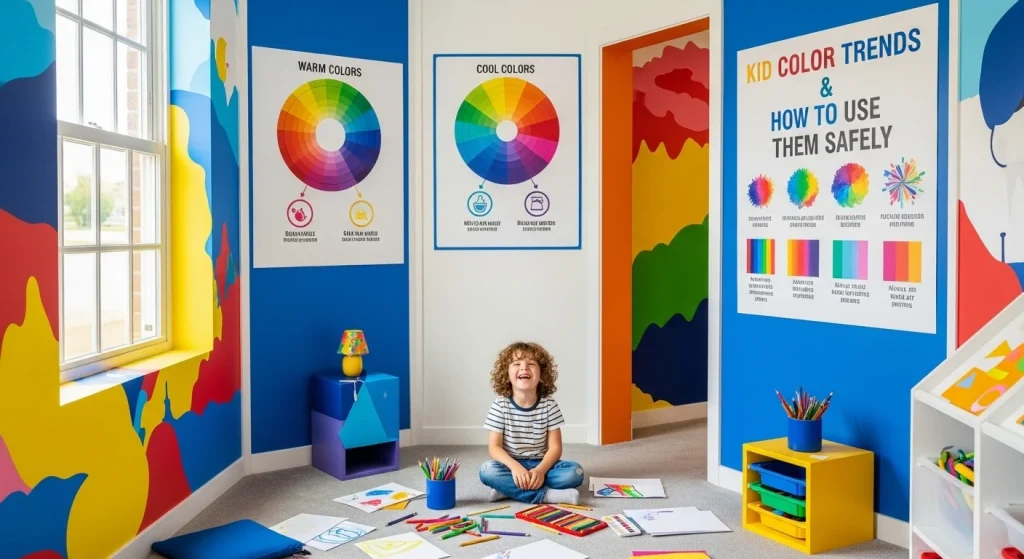
5. Room Zones & Color Use
| Zone | Ideal Colors | Psychology Benefit |
|---|---|---|
| Sleeping / Reading | Lavender, Sage, Pale Blue | Encourages relaxation & rest |
| Play / Activity | Coral, Peach, Soft Yellow | Energizes and boosts play |
| Study / Creativity | Teal, Calm Green, Light Grey | Enhances focus and inspiration |
| Shared / Transitional | Subtle Neutrals with Accent Touch | Flexible and harmonious |
6. Real Mom Tips to Make Color Work
- Use peel-and-stick wallpaper or decals: Change or swap later as tastes evolve.
- Paint half or stripes: Dark base, light above—keeps the look modern and breezy.
- Accent ceilings & trim: Dip shelves in soft teal or paint trim sage—they pop against neutral walls.
- Upcycle furniture: Light grey dresser + mustard knobs or coral wall = magazine-worthy polish.
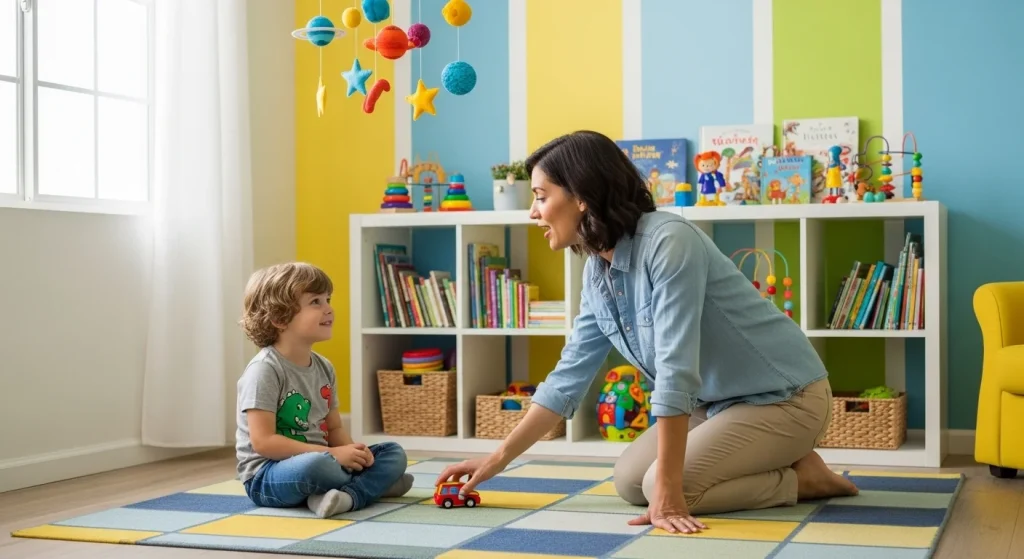
7. Matching | Mother–Daughter Touches
These spaces become more than rooms—they become shared moments. Plan color themes you both can enjoy:
- Together choose the wall paint (e.g. coral accent for mom, dusty teal for daughter), anchored by neutral walls.
- Coordinate bedding, nail color (see Beach-Ready Nails: Summer) and accessories in matching tones.
- Add a joint craft: paint canvases together in your accent colors.
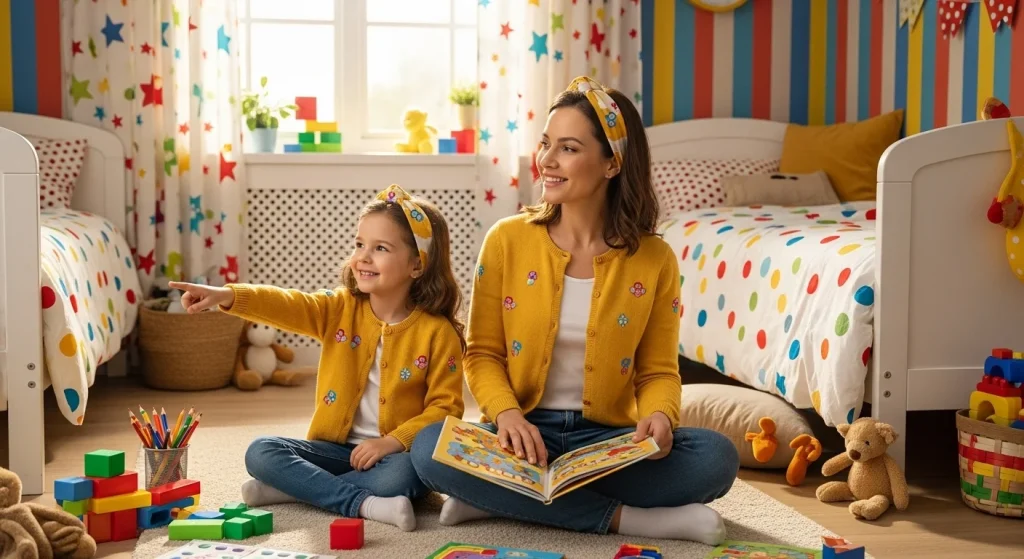
8. Lighting & Texture: Colors in Motion
Color appearance shifts with light:
- Install blackout curtains wall-to-wall in neutral tones—adds softness and consistent shade.
- Use layered lighting: overhead soft tones + bedside lamp + fairy light ‘star effects.’
- Bring color through texture: rug in mustard, throw pillows in blush pink, basket liners in teal—these anchor without repainting.
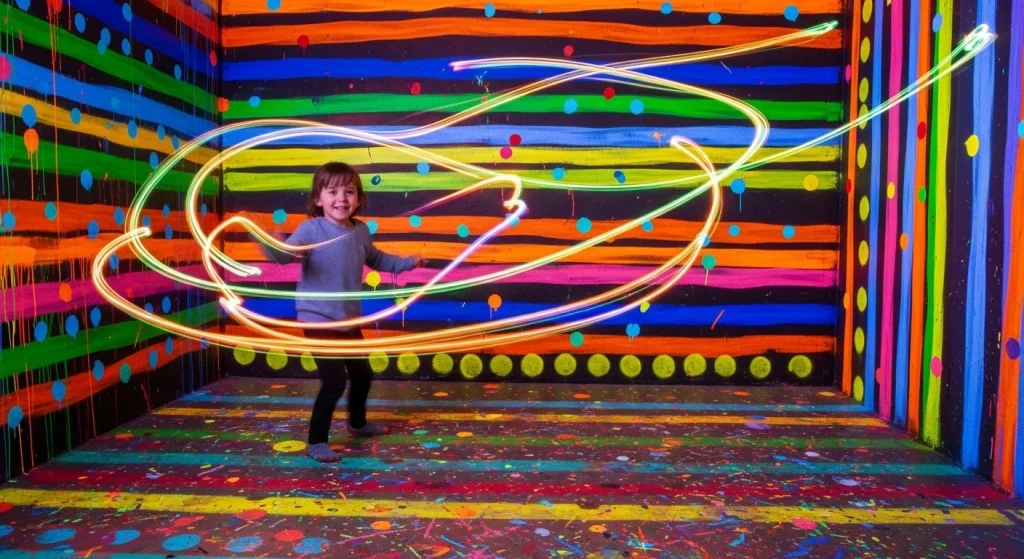
9. Senior Tricks For Longevity & Updates
- Choose satin or eggshell finish paint for durability (easy to clean).
- Use washable gloss paint for high-touch areas (chairs, doors).
- When your child grows, update accessories—not walls. Quilt covers, rugs, wall banners—simple swaps keep the room fresh.
10. Final Checklist Before You Commit 📝
- Choose 2 main wall colors + 1 playful accent
- Test before you paint—stick samples and live with them for sunlight changes
- Plan a child-friendly painting day—teach tape-use and color mixing
- Involve your child in picking fabrics or artwork
- Keep a ribbon or color swatch from the room to match future accessories
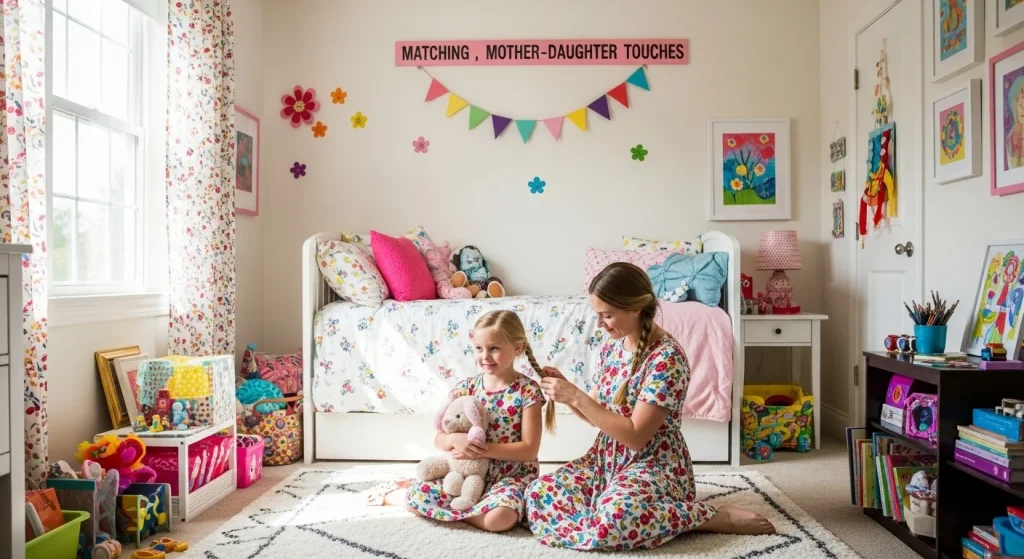
Final Thoughts
Color isn’t just paint—it’s invitation, emotion, and memory. Thoughtful color choices can elevate your child’s room from baby-blue to big-girl grace or toddler cave into a tranquil wonderland. By balancing calming and playful hues, accenting wisely, and involving your child in the process, you create a space that’s not only beautiful—it’s intentional, inspiring, and full of heart.
If you’d like beautiful room renovation ideas that feel luxe on a budget, also check out our guide on budget‑friendly kids room makeover.

